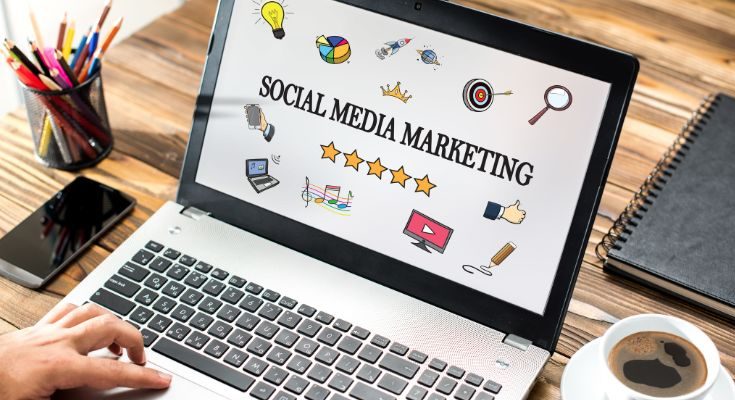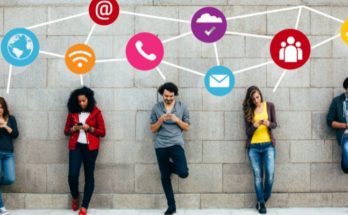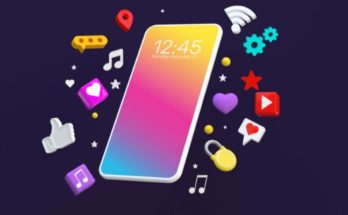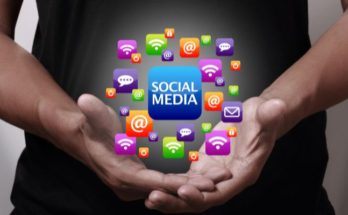Social media has revolutionized the way we connect, interact, and engage with others both near and far. Its convenience, affordability, and accessibility have enabled people to build relationships, engage with new cultures, and stay informed about news and events around the world. As a result, the landscape of communication has shifted and transformed in a way that was unimaginable just a few decades ago. This paper will explore the new paradigm of connection enabled by social media and the positive and negative effects of this shift. By understanding how social media has changed the way we interact, we can maximize the benefits while minimizing the risks.
I. The Emergence of Social Media
A. History of Social Media
The concept of social media has been around since the mid-1990s, when the first iteration of online communities were created. Early social media platforms such as AOL Instant Messenger, Yahoo Groups, and Six Degrees were revolutionary, allowing users to communicate and connect with each other in ways that had never been possible. Over the course of the next decade, these platforms evolved into the more recognizable names we know today, including MySpace, Facebook, and Twitter. This evolution created an entirely new marketplace for content, where users could share their thoughts, opinions, and experiences with anyone in the world.
B. Advantages of Social Media
The emergence of social media platforms provided many advantages for both individuals and businesses. For individuals, the ability to access information, share experiences, and connect with others around the world was unprecedented. This enabled people to form relationships, find support, and even start new businesses. For businesses, social media provided a cost-effective way to reach a wider audience and increase brand awareness. This access to a larger audience then enabled businesses to better understand their customers and tailor their products and services accordingly.
II. Benefits of Social Media
A. Increase in Accessibility
One of the biggest benefits of social media is the increase in accessibility it provides. With the rise of smartphones and internet connectivity, people are able to access information, communicate with others, and connect with the world like never before. This increased access has had a profound effect on our lives, both positively and negatively. On the positive side, it has enabled people to stay connected with family and friends, access a wider range of knowledge, and even find new opportunities. On the negative side, it has created a “digital divide,” where those without access to technology are at a disadvantage.
B. Building Communities & Connections
Social media has also enabled people to build communities and connections with others in ways that were not possible before. Through platforms like Facebook, Twitter, and Instagram, people can share their experiences, connect with like-minded individuals, and start conversations on topics they are passionate about. This has allowed people to engage with topics they may not have been exposed to before, learn from each other, and form meaningful connections with people from all walks of life.
III. Negative Impact of Social Media
A. Risks of Excessive Use
Although social media has its benefits, it also comes with some potential risks. Since social media platforms are designed to be engaging and addictive, excessive use can lead to increased stress levels, disrupted sleep, and decreased productivity. It can also lead to feelings of loneliness and depression due to unrealistic comparison to others. To mitigate these risks, it is important to set boundaries on how much time you spend on social media and develop healthy digital habits.
B. The Spread of Misinformation
Another risk posed by social media is the spread of misinformation. With the sheer amount of information online, it can be difficult to differentiate between reliable sources and unreliable ones. As a result, false information can spread quickly, leading to confusion and misinformed decisions. To reduce the spread of misinformation, it is important to be proactive and take steps to verify the accuracy of the information you consume. This includes using reliable sources, double-checking facts, and being wary of clickbait headlines.
IV. Ways to Mitigate the Negative Effects
A. Educate Yourself
The best way to mitigate the negative effects of social media is to educate yourself on the potential risks. This involves understanding how social media platforms work, the potential impact of excessive use, and the ways in which misinformation can be spread. By understanding the potential pitfalls, users can take steps to reduce the risks and maximize the benefits of social media.
B. Creating a Balanced Lifestyle
In addition to educating yourself, it is important to create a balanced lifestyle that helps limit the amount of time you spend on social media. This means setting boundaries, limiting scrolling time, and taking regular breaks from your devices. It also means spending more time offline with family, friends, or engaging in activities that do not involve technology. By finding a healthy balance between online and offline activities, you can ensure that you are not overusing social media.
Conclusion
In conclusion, social media has transformed the way we connect, engage, and interact with each other. Its advantages include increased accessibility, building communities, and staying informed. However, it also comes with some risks such as the spread of misinformation and excessive use. To maximize the benefits of social media while preventing the risks, it is important to educate yourself on the platform, create a balanced lifestyle, and take steps to verify the accuracy of the information you consume.



